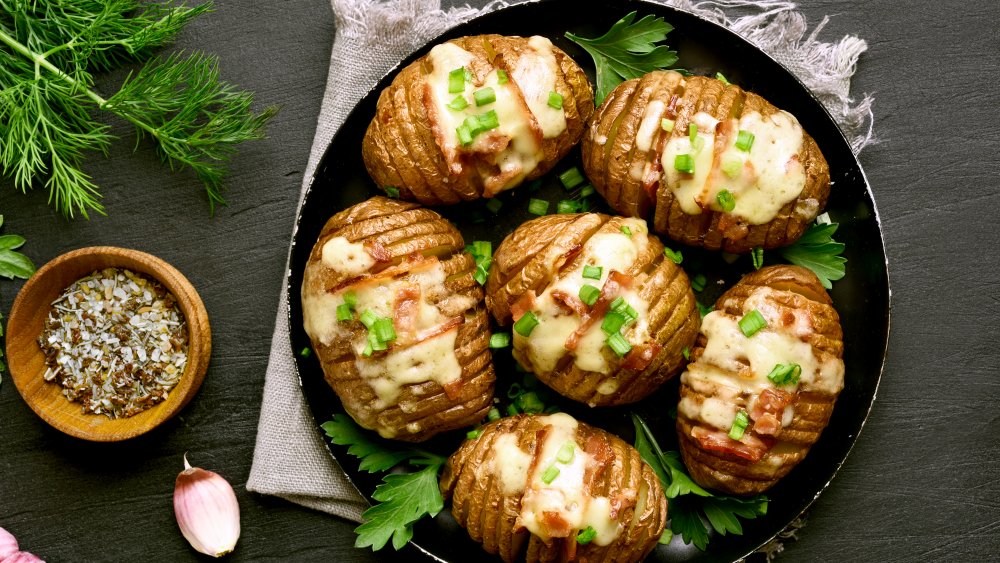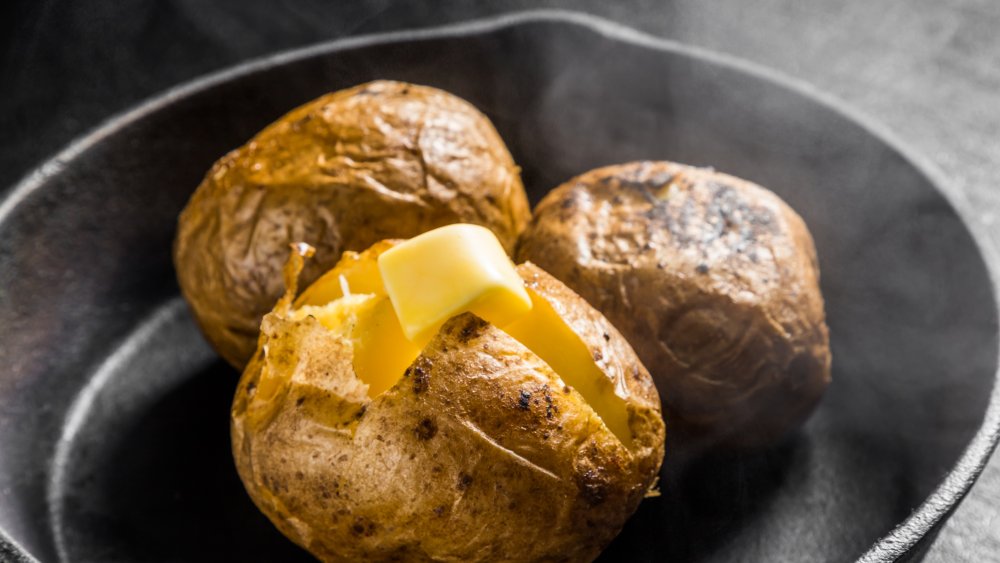The Real Reason You Should Be Saving Your Potato Skins
We enjoy our potatoes baked, roasted, in a salad, mashed, deep fried in long strips, and as a snack food that's low on nutrition but high in calories. But the one thing many of us may not think of doing, is eating a potato with its skin on, or saving the skins after we've peeled our spuds — and we may accidentally be throwing out the best bits of the potatoes for no reason other than we didn't know.
Doing away with potato skins means that you are losing out on the most nutritious part of the potato. "Potato skins contain about 3 grams of protein, about 5 grams of fiber (the flesh only has 2 grams), and B vitamins," nutritionist Isabel Smith tells Shape. It may come as a surprise, but potato skins have more vitamin B6 than its creamier insides do. Medical News Today says B6 is one of the B vitamins that boosts the central nervous system.
Potato skins are rich in vitamins and antioxidants
In his blog Growing Produce, writer Phil Nolte (who is a potato specialist at the University of Idaho) says all potato skins, regardless of how thick or thin they are, bring something to the table. While it is a myth that all of the potato's nutrition lies in its skin, potato skin contributes greatly to the overall nutritional composition of a potato. Most of a potato's iron, for instance, can be found in its skin, while the protein content of a potato is split 50/50. But what potato skins should be prized for, is the amount of antioxidants that can be found in potato skins. "The outer layer of fruits and veggies are rich in phytochemicals, antioxidants, and fiber," Elizabeth Stein, head of wellness food company Purely Elizabeth tells Shape. "Studies have shown that phytochemicals have the potential to protect cells from damage that could lead to cancer, stimulate the immune system, and reduce inflammation."
Need ideas for how to use your potato skins? Try roasting 'em, and sprinkling with cheese and scallions (via Kitchn).

